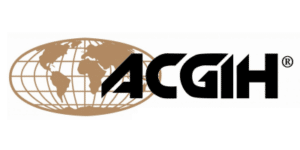Polychlorinated biphenyls (PCBs) are man-made chemicals typically found in caulk, light ballasts, electric switchgear, hydraulic systems, and dielectric transformers. PCBs can off-gas into the air from manufactured building materials containing the chemical both inside and on exterior building surfaces. They can be released into the air and environment during renovations, especially of retail stores, apartment buildings and older buildings in general.
Omega Environmental can assess for PCB sources, potential level of PCB exposure and health risks, create a work plan for its remediation, then remediate and dispose of PCBs and any other hazardous substances, including asbestos, lead, and mold.
PCB Background
PCBs and products containing them were manufactured and widely used in the U.S. between 1929 and 1979, when their manufacture was banned because of the chemical’s health risks including probable carcinogenic effects as well as confirmed non-carcinogenic toxicity to the human immune, reproductive, nervous and endocrine systems.

A Typical Pre-1979 Fluorescent Light Ballast with PCBs Commonly Found in Schools
(courtesy of the EPA)
According to the EPA, PCB toxicity and consistency varies from thin, light-colored liquids to yellow or black waxy solids. PCBs were used in hundreds of industrial and commercial applications because of their non-flammability, chemical stability, high boiling point, and electrical insulating properties. Many are still present in buildings erected before 1980:
- Transformers and capacitors
- Electrical equipment including voltage regulators, switches, re-closers, bushings, and electromagnets
- Oil used in motors and hydraulic systems
- Old electrical devices or appliances containing PCB capacitors
- Fluorescent light ballasts
- Cable insulation
- Thermal insulation material including fiberglass, felt, foam
,and cork - Adhesives and tapes
- Oil-based paint
- Caulk
- Plastics
- Carbonless copy paper
- Floor finish
Assessment, Work Planning & Remediation
Contact us to schedule a site visit to assess your PCB sources, potential exposure and develop a work plan for the removal of PCBs and any other hazardous substances. This includes removal of exterior caulking/sealant from building windows, expansion joints and seams, old light fixtures, onsite transformers and electrical equipment.
Omega’s specialists have decades of experience in providing safe, thorough and cost-effective PCB assessments, remediation, including appropriate signage, air monitoring and engineering controls throughout the removal process. Our team has extensive training in hazardous materials management and remediation oversight. We can provide the necessary management for the proper disposal of hazardous materials in compliance with applicable federal, state and local regulatory requirements and using best practices to mitigate risks to people and the environment.
Contact us for more about our PCB inspection and testing service
How to Identify Lighting Ballasts Containing PCBs
An Illustration, Courtesy of the EPA







